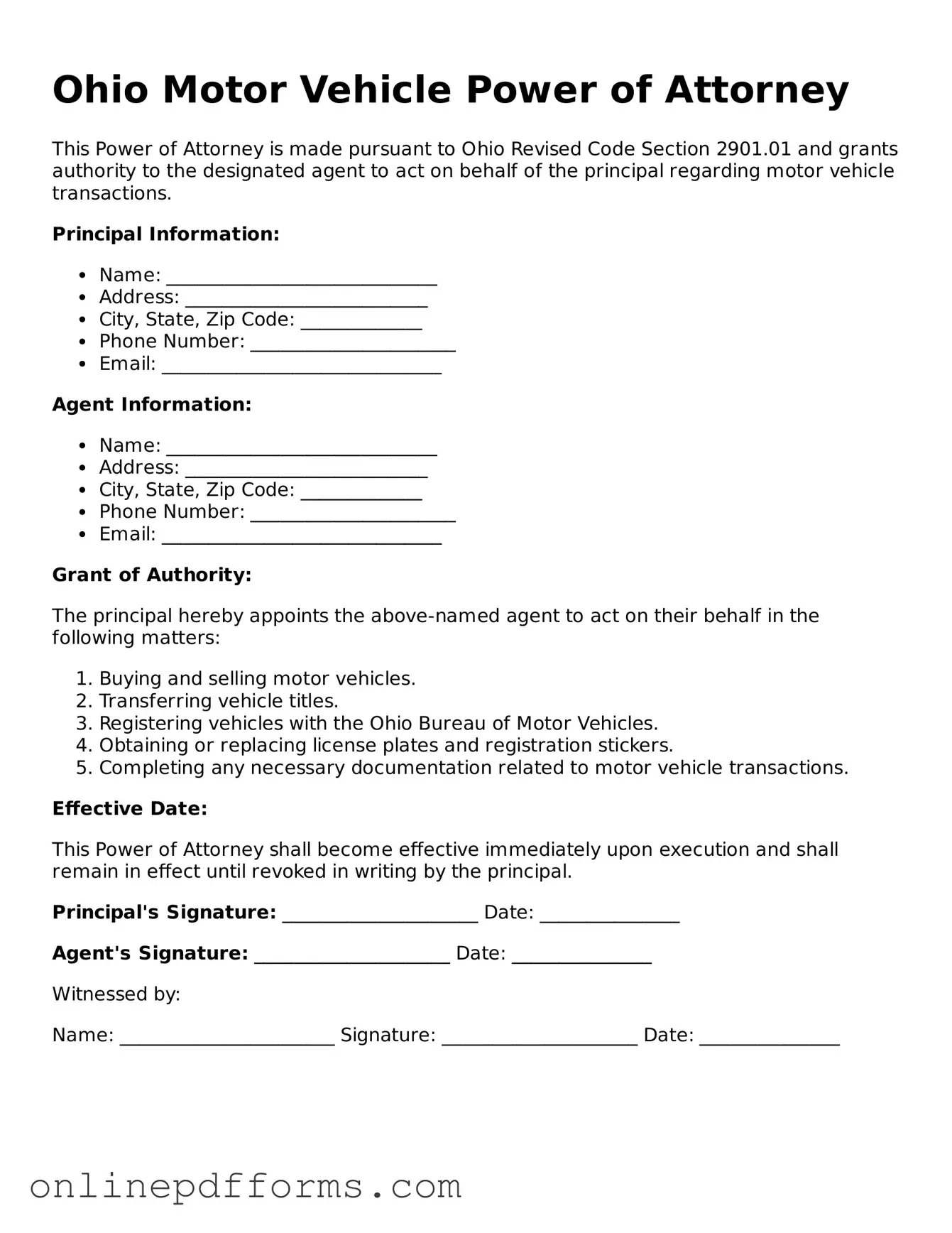The Ohio Motor Vehicle Power of Attorney form is similar to the General Power of Attorney. Both documents allow an individual to designate another person to act on their behalf in various matters. However, the General Power of Attorney covers a broader range of issues, including financial and legal decisions, while the Motor Vehicle Power of Attorney is specifically focused on matters related to vehicles, such as title transfers and registration. This specialization makes the Motor Vehicle Power of Attorney a more streamlined option for vehicle-related transactions.
In exploring the various documents related to vehicle transactions, it's important to understand the role of the Oklahoma Motor Vehicle Bill of Sale form, which is essential in confirming the sale of a vehicle from one party to another. This form provides a legal framework that encompasses the vehicle's details, sale price, and conditions, ensuring clarity in ownership transfer. For those interested, templates and guidance on how to properly complete such documentation can be found through Auto Bill of Sale Forms, which are designed to simplify the process for buyers and sellers alike.
Another document akin to the Ohio Motor Vehicle Power of Attorney is the Durable Power of Attorney. This document remains effective even if the principal becomes incapacitated. Like the Motor Vehicle Power of Attorney, it allows for the delegation of authority to manage specific tasks. However, the Durable Power of Attorney can encompass a wider array of responsibilities beyond vehicle matters, such as healthcare decisions and property management, providing a comprehensive approach to managing an individual's affairs during incapacity.
The Limited Power of Attorney is also similar in that it grants specific powers to another individual. This document is tailored for particular tasks, much like the Motor Vehicle Power of Attorney, which is limited to vehicle-related issues. The key difference lies in the scope of authority; the Limited Power of Attorney can be used for various situations, such as signing contracts or handling real estate transactions, while the Motor Vehicle Power of Attorney is exclusively for motor vehicle transactions.
The Vehicle Title Application is another document that shares similarities with the Ohio Motor Vehicle Power of Attorney. While the Vehicle Title Application is a form used to apply for a new title, the Motor Vehicle Power of Attorney allows someone else to complete this application on behalf of the owner. Both documents are essential in the vehicle registration process, but the Power of Attorney specifically enables another person to act in the owner's stead.
The Bill of Sale is also related to the Ohio Motor Vehicle Power of Attorney. A Bill of Sale is a document that records the sale of a vehicle, serving as proof of the transaction. When someone uses the Motor Vehicle Power of Attorney, they may need to sign a Bill of Sale on behalf of the vehicle owner. Both documents are critical in transferring ownership, but the Power of Attorney provides the necessary authority for one party to act on another's behalf.
The Release of Liability form is another document that parallels the Motor Vehicle Power of Attorney. This form notifies the state that the seller is no longer responsible for the vehicle after it has been sold. When a Power of Attorney is in place, the designated agent can sign the Release of Liability, ensuring that the seller is protected from any future liabilities related to the vehicle. Both documents are integral to the vehicle transfer process, but they serve different purposes.
Finally, the Odometer Disclosure Statement is similar in that it is often required during the sale of a vehicle. This document confirms the vehicle's mileage at the time of sale. When using the Ohio Motor Vehicle Power of Attorney, the designated agent can complete and sign the Odometer Disclosure Statement on behalf of the owner. Both documents are essential for compliance with state regulations during vehicle transfers, ensuring transparency and accuracy in the transaction.
